Is There a Place for Electronics in Fly Fishing?
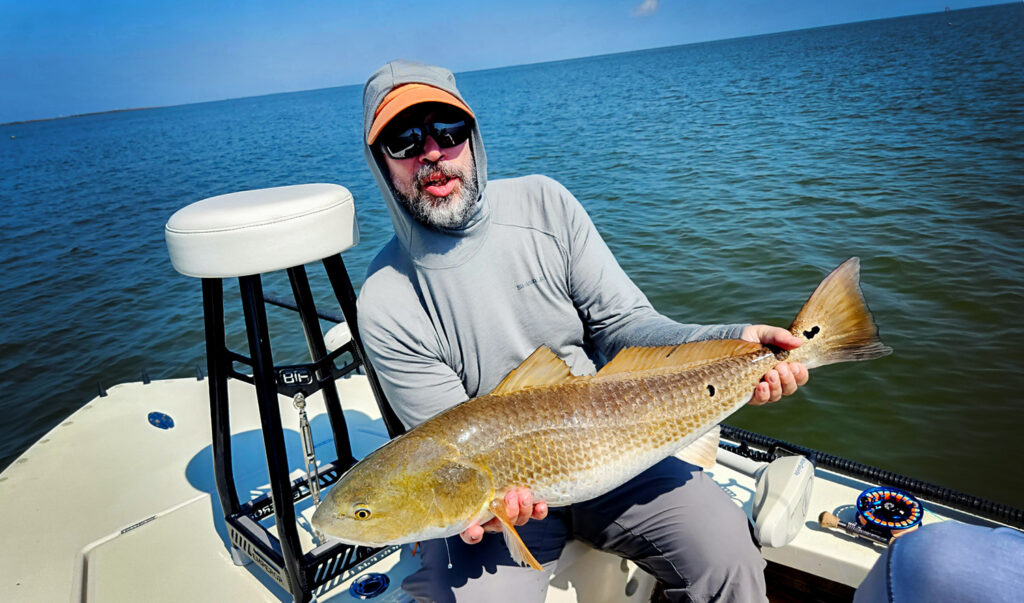
This is really a poll. I’d like to know what you think. I don’t often ask a straight question of my readers but I think this is a really good one. I’ll give you a little context. I recently went fishing for redfish with my brother. As often happens this time of year, we got dealt a tough hand by the weather. We had high wind, mostly poor light, and muddy water. A tough day for even a veteran flats angler but especially for my brother Tom as this was his first redfish trip. Tom is a bass guy and with all the difficulty we had spotting fish he was surprised that neither the guide or myself had every employed electronic sonar fish finders. A piece of equipment ubiquitous in bass fishing. I have bass fished with guys who use them, not that I can make heads or tails of it. I’ve never had the experience of seeing a fish on the graph and catching it. I know how I feel about it and, if you’ve been a G&G reader for a while, you probably do too but I’m not going to get into my opinions here. I want to hear yours. Is there a place for electronics in fly fishing? Do you personally use them? Do you see any benefit or risk, beyond catching more fish? Let me know what you think in the comments. Please keep the discussion civil and respectful. I will not approve any comments which attack other commenters or are simply intended to be hateful. Other than that, have at it. Thanks!
Read More »Bonefish VS Redfish
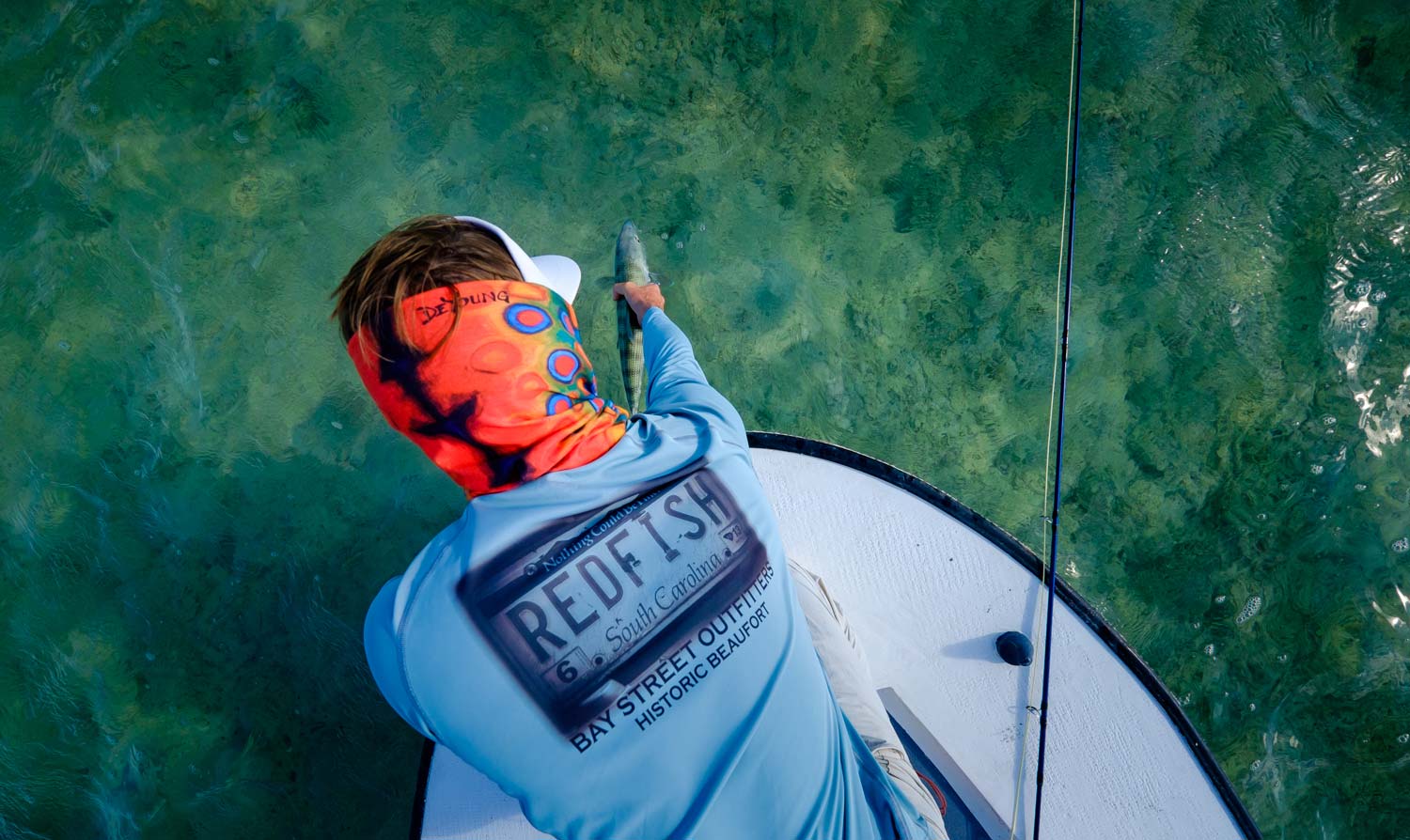
By Owen Plair
Over 12 years of working in a fly shop and 10 years of guiding for Redfish I have heard the comparison of Redfish and Bonefish more than any species out there.
They are so similar in many ways but also very different. You can target redfish on the coast of the Atlantic Ocean from Massachusetts to Florida and the Gulf Coast from Florida to northern Mexico. That is ton of area for Redfish to live and thousands of miles of flats which is why its such a favorite target species for fly anglers in the United States. Bonefish on the other hand are not as abundant in the U.S., because they inhabit warm tropical waters and can only be found in South Florida and Hawaii. There are a few myths of Bonefish going a little father north at times but not targeted. Bonefish can also be found around the world in countless other countries that have tropical waters, from the Bahamas all the way to the Seychelles, unlike the Redfish, which are only found in the US. I would say that bonefishing has a more exotic feel because in most cases you have to travel pretty far to fish for them. Redfish, on the other hand, can be caught in multiple states through out the year, in different weather patterns and completely different ecosystems. They are both amazing fish to target with a fly and offer great opportunities for sight fishing.
I fished for bonefish a few times down in Biscayne Bay and Islamorada, FL with my friend Capt. Honson Lau. Taking a break from Tarpon, I was fortunate enough to hook one nice fish, which broke off before we could land it.
I’ve been catching redfish since I was a 3 year old kid and have been a full time guide for Redfish in Beaufort, SC since 2009. I always had the urge to catch bonefish but just never found myself able to go on a destination trip for them. I always felt like it was so similar to Redfish, which I had spent countless hours targeting. Finally, the right opportunity came and I was on a plane down to South Andros to join Louis on his South Andros Bonefish School back in November 2016.
Man, what an incredible trip learning about bonefish. After 6 days of fishing the flats of South Andros I was very lucky to experience some amazing fishing. Everything from schools of fish, tailing fish, mudding fish, big singles coming in from the ocean, deep water schools, and fish weaving through the mangroves. I lost count of fish that week but did not lose count of all the memories and techniques learning through experience even after a few too many Kaliks. One thing I realized after years of Redfishing was that targeting the two species was
Read More »Fight Big Fish with the Butt Section of the Fly Rod Not the Tip

If you fly fish long enough and pay your dues, it’s just a matter of time until you hook into a giant fish and experience defeat.
I’ve always loved the saying, “It’s always the big ones that get away”, like it provides anglers a viable excuse for losing battles with big fish. I’ll admit there are times when we’re at complete mercy of big fish, and defeat is 99% inevitable, but most battles are lost due to angler error, specifically by fighting big fish incorrectly with the fly rod.
For many anglers, every time they lose a big fish, a portion of their fish-fighting confidence disappears with it, and they become more paranoid with each unsuccessful encounter. Overtime, this paranoia and lack of confidence distorts their fish fighting instincts, and they begin to play big fish too conservatively, thinking if they put more pressure on the fish, the tippet will break or the hook will pull free. What they end up doing most of the time is fighting the fish with their rod tip instead of fighting the fish with the mid-section and butt section of the rod. This seriously limits an anglers ability to apply power and steer the fish during a fight, because all the power comes from the butt and mid-section of the rod, not the tip. It also will keep the leverage in the fish’s court, which will take it far longer for you to tire out a big fish. Fight times can be doubled, sometimes even tripled, and that’s bad news for a trophy specimen if the battle is taking place during the year when oxygen levels are low (you can play a fish to death). Furthermore, the longer the fight is prolonged, the better the chance something could go wrong, resulting in a fish being lost during the fight (teeth wearing through tippet, fish raking you across rocks and breaking line, fish snapping you off in a snag, ect).
Fight a big fish the right way
First, set your drag precisely before you wet a line. Doing so, you’ll be confident if you begin applying too much pressure on a big fish, your reel will smoothly let out fly line. Second, when applying side pressure (to flex the mid and butt sections
Easy Bug Sampling For Trout Fishermen Video
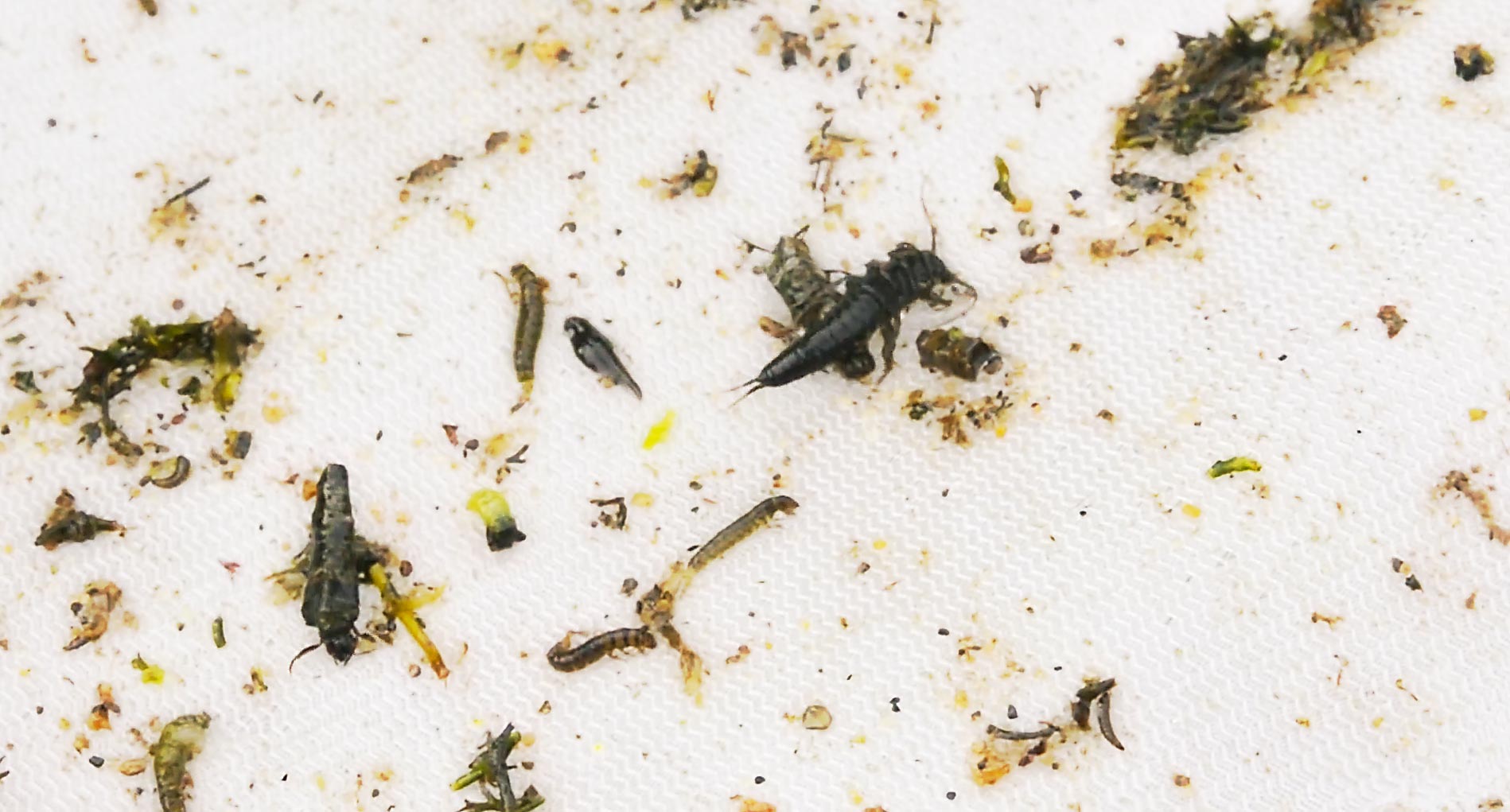
Ever have one of those days where you just can’t figure out what the trout are eating?
Selective trout can make you crazy but there is a way to figure out for sure what they’re keyed in on. Taking a stream sample is quick and easy and it really gives you a leg up on the fish. With a bug seine you can sample nymphs from the bottom, emergers from the film and spinners or adults from the surface. Match the size, color and profile of your fly to the insects you find and you’ll be into fish.
Paint strainers make great bug seines. They’re cheap and easy to store in your pack or boat. Stretch one over your net and you’re in business. You can get yours HERE.
CHECK OUT THIS VIDEO AND LEARN TO SAMPLE BUGS ON YOUR WATER.
Read More »Bring Enough Line Holder
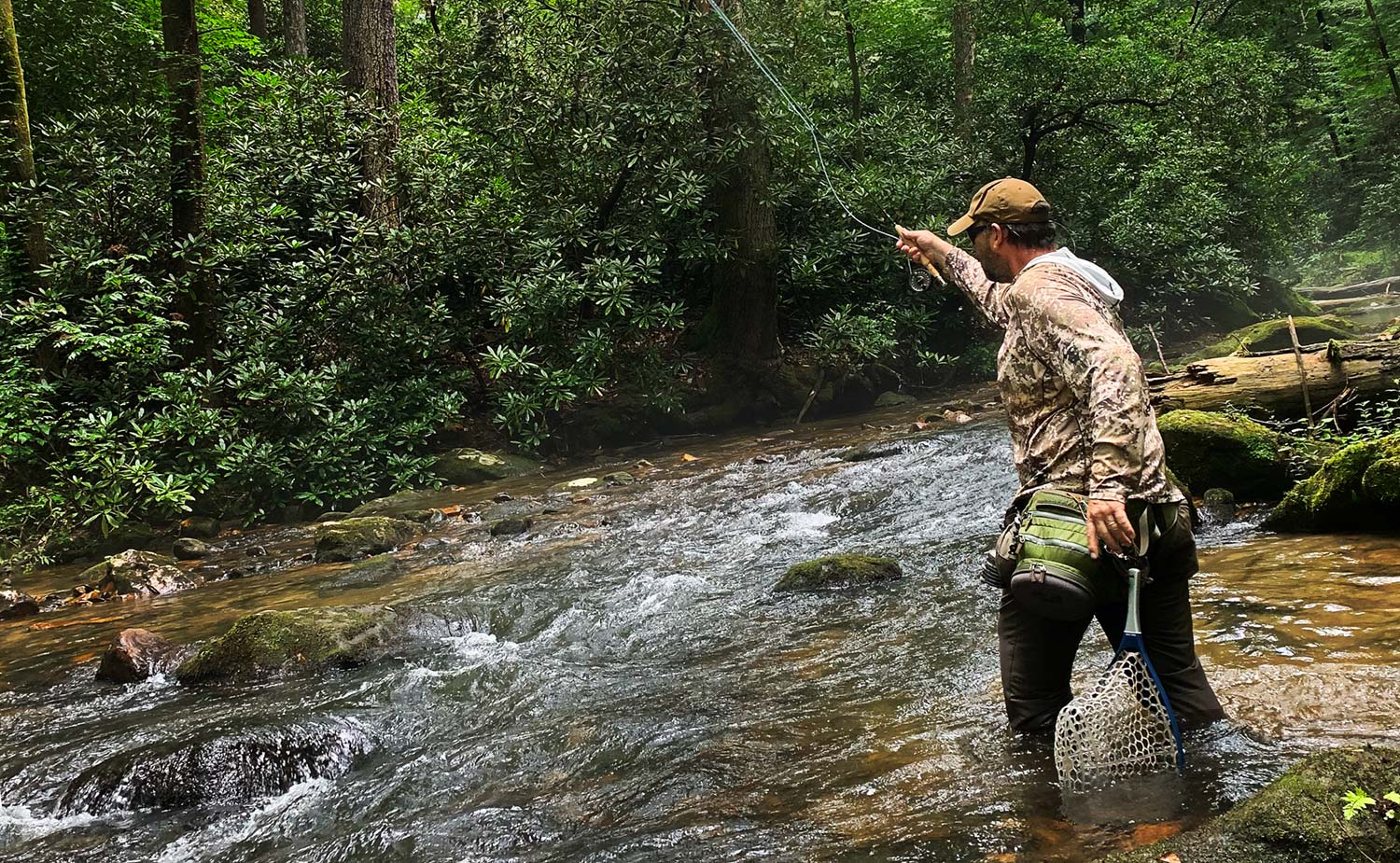
By Louis Cahill
I got to feeling nostalgic the other day and it bit me in the ass.
Last week Jason Tucker and I slipped out for a little small stream fly fishing. Our destination was a little mountain gem I have fished for more than twenty years. As pretty a stream as you’ll find anywhere and full of wild trout. Like most streams this size, it offers an average fish size of eight to ten inches. While those little guys are beautiful, fun, and no pushovers, anyone who has devoted serious time to this stream knows there are much bigger fish lurking there. Every now and then a skilled angler will tangle with fish over twenty inches. You have to be good and lucky but they’re there.
Those of you who follow closely know that I am still recovering from multiple surgeries and am really just getting my boots wet for the first time in well over a year. I’m still not too sure on my feet and have just been enjoying getting out with friends and not putting much pressure on myself to perform, which is honestly pretty awesome. I had a new line I wanted to try out and, not being sure how I’d like it, I scrounged around for an empty reel to put it on, rather than strip off my trusted four weight line.
I came across an old classic click and pawl reel I haven’t fished in decades. I got to thinking about all the fish I’d put on that reel in the years I fished it hard. Back when I was fishing exclusively homemade bamboo rods, I used old classic reels like this one, many of them handed down. This was the first one I bought for myself. Maybe my first significant fly gear purchase. It’s a great old reel. An Orvis Battenkill from the old days, with plenty of life left in it. A simple trout reel with click and pawl drag. Plenty of reel for eight to ten inch fish, right? I’m guessing you can see where this is headed.
“A TROUT REEL IS JUST A LINE HOLDER.”
I’m sure you’ve heard that plenty of times. Maybe you’ve even said it.
Read More »Lowcountry Winter Redfish
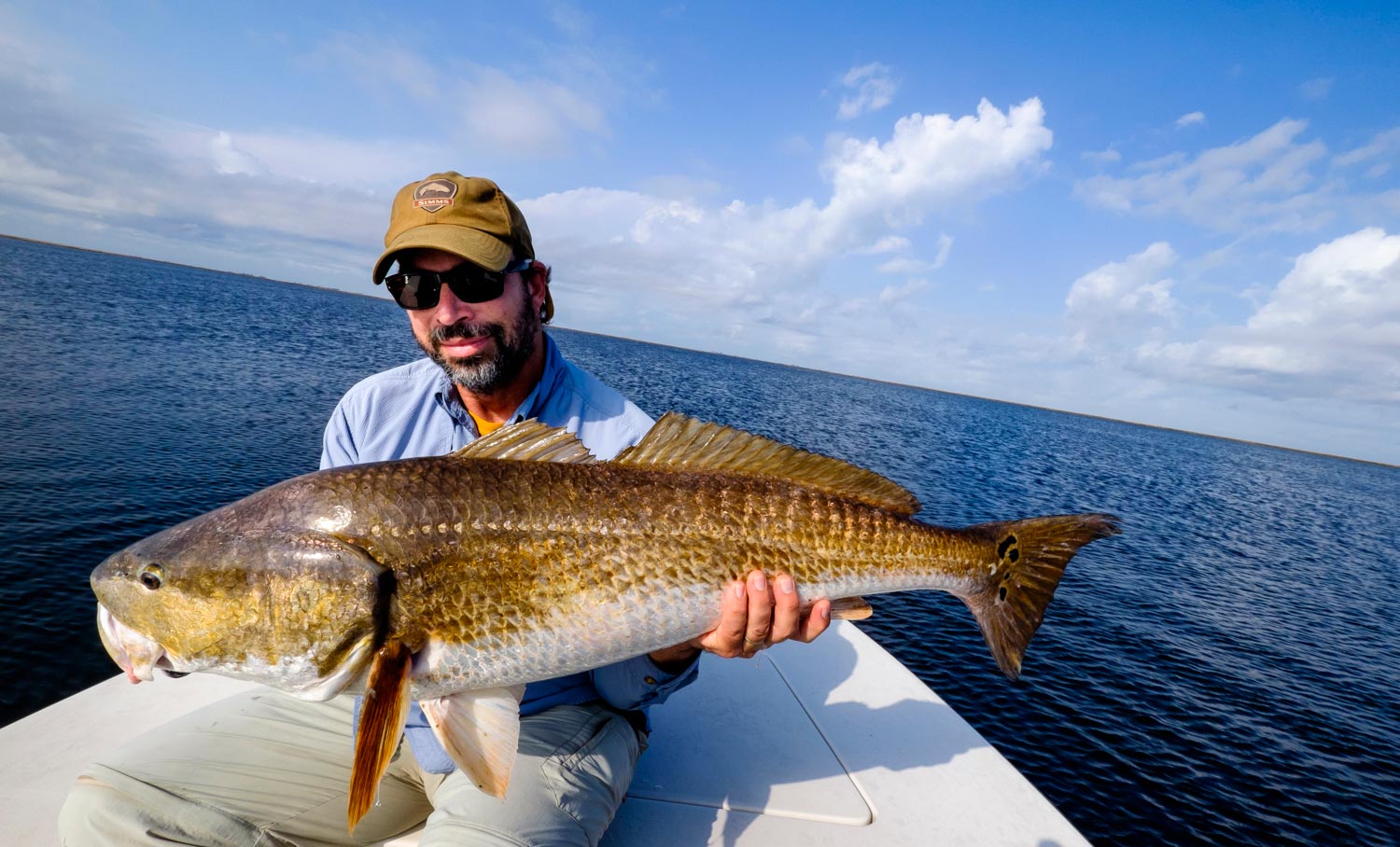
By Owen Plair
What makes the winter fishing for redfish so special?
There are not many fisheries that have a winter time season, due to migratory fish, cold temps, snow, and ice. One of the many great things about the Lowcountry is that it is a year round fishery for Redfish. When the bright green spartina grass starts to fade to brown and the water temperature dips below 65 degrees; you know winter fishing has arrived here on the coast of South Carolina.
One thing that’s special about the winter is the low tide fishery, which is mainly what we are fishing. The fiddlers go down in the winter which takes away the opportunity for tailing fish on the flood tides. During the low tides from mid December until the end of March, fishing can be some of the most visual of the year as large schools of 20-200 Redfish cruise the shallow water mud flats.
In the winter, water clarity is the best it gets all year. Colder water and less rain provides gin clear water on the mud flats, and small creeks. Clear winter skies make it easier to see these large schools as far as 50-100 yards from the boat, as they cruise down the mud flats in 8-10 inches of water. It’s as close to bone fishing that you can get and an absolute blast watching 5 or 6 different fish chase the fly.
Redfish school up in high numbers during the winter time to stay safe from dolphin, which are their number one predator. The dolphin also take advantage of the clear water and large schools during low tide, since there are not as many mullet or other bait fish for them to feed on. The redfish naturally feel more comfortable cruising the flats in numbers, when threatened by feeding dolphin.
Like I mentioned above, there are not a lot of baitfish and shrimp around during the winter months. One good thing about this is that the redfish
Read More »Regarding The River
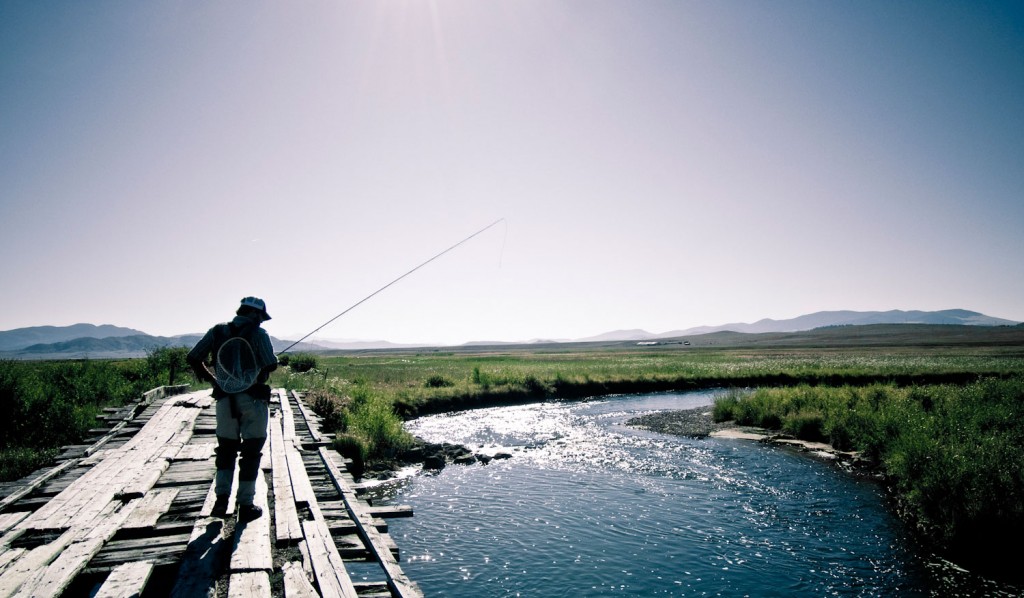
WHAT CAN I TELL YOU ABOUT HER? THE ONE THAT I LOVE.
The one with whom I have left my heart. Dark and lovely. Moody and sullen, she gives little away. Sometimes capricious, never predictable, she keeps me in wonder, in awe. She keeps me for herself. She heeds no man. Selfish, she takes what she wants and wastes not the time to covet. She seeks out the low places, the dark and shady places. She keeps their secrets. I look into her face and I see only the sky.
She knows me. She washes over me, runs through me. She thrills me, frightens me. She gives me peace, makes me whole. She asked nothing from me and she receives it. I have given her my life and she has returned it. I enter her and she remains inside me when I go. She owns me and of her, I know almost nothing. She carves the earth in her image. She carves my soul.
I see her, sometimes when I least expect her. She takes
Read More »Farm Waters
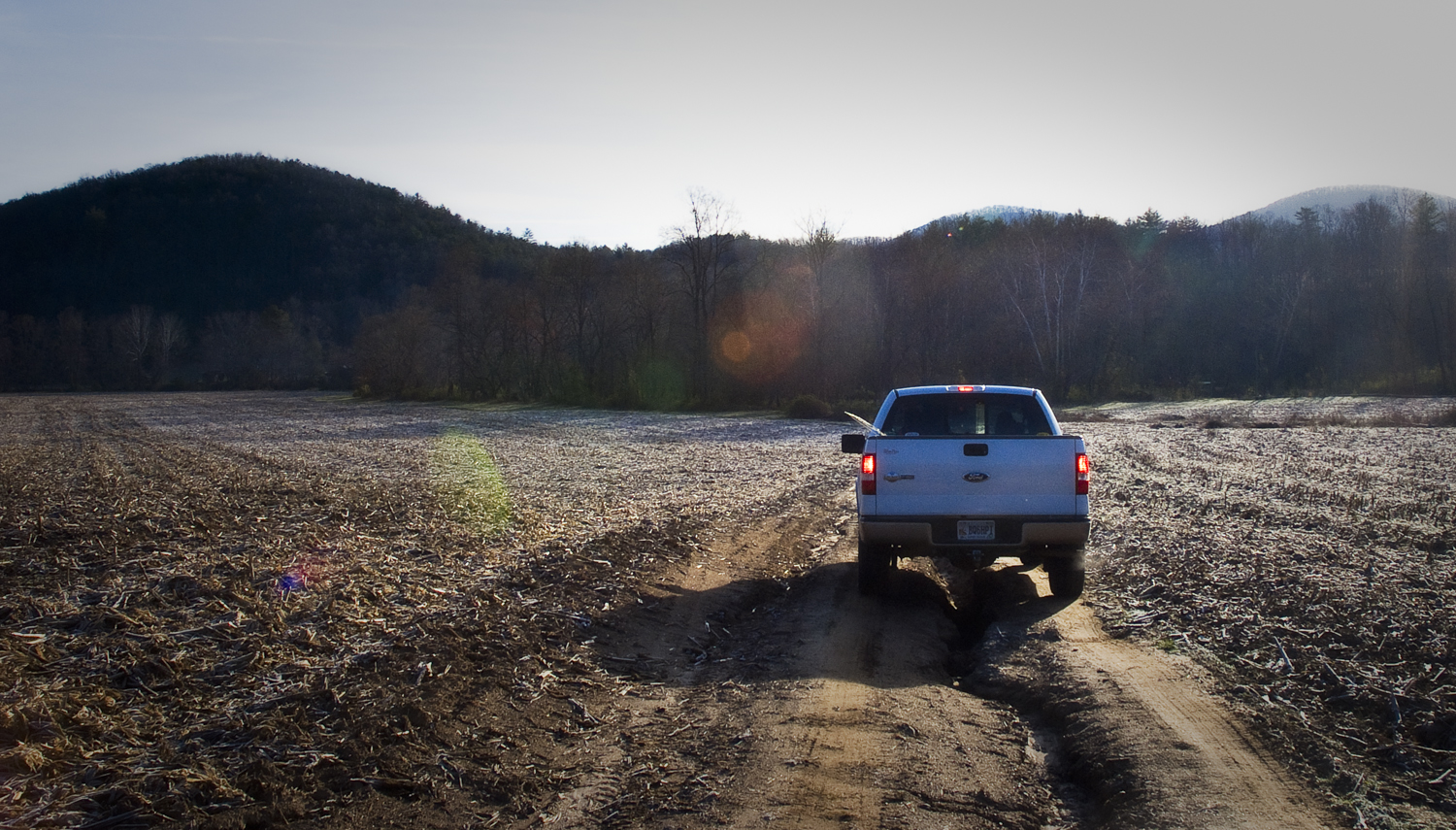
By Ethan Smith
If we want clean water we need to pay farmers to clean it up.
What? Yes, let’s pay farmers a premium over the current farm subsidy program to help keep our rivers clean! That sounds crazy right? Well it isn’t, let me explain.
The farm bill and its subsidies are currently clean water’s worst enemy. The farm subsidies began with their heart in the right place. They help save American farmers by guaranteeing their crops with insurance. So if something bad happens on the farm like a flood, the farmer still gets paid. I can support that as a concept, however every piece of legislation has some unintended consequences especially when there is finance involved.
In this case the unintended consequences of the farm bill and it’s crop guarantees is rivers with excessive silt contamination and high nutrient loading, leading to toxic algae blooms, poor fish habitat and crappy fishing.
So how does the farm bill lead to these poor fishing conditions?
Let’s say a farmer has some land in a floodplain that floods one out of three years. It wouldn’t make sense for him to plant that land under normal free market conditions because the profits from the two years of successful growth would be wiped out by his losses every third year when it floods. So in theory, he would most likely leave them as wetlands. But in our warped incentive world he doesn’t care because every third year when that part of his land floods he collects insurance money from the government and gets paid anyway. So he doesn’t have to worry about flooding. Either way he makes money.
So that farmer plows under anything and everything he can plant. More land equals more money for him because there is no risk to him planting a wetland with crops even if it floods. It’s a win win situation. Drive over any bridge and there is a good chance that there is farm land adjacent planted with crops that is clearly in the flood plain, the farm subsidy at work.
So how can we change this?
Read More »Technical tips from Southern NZ
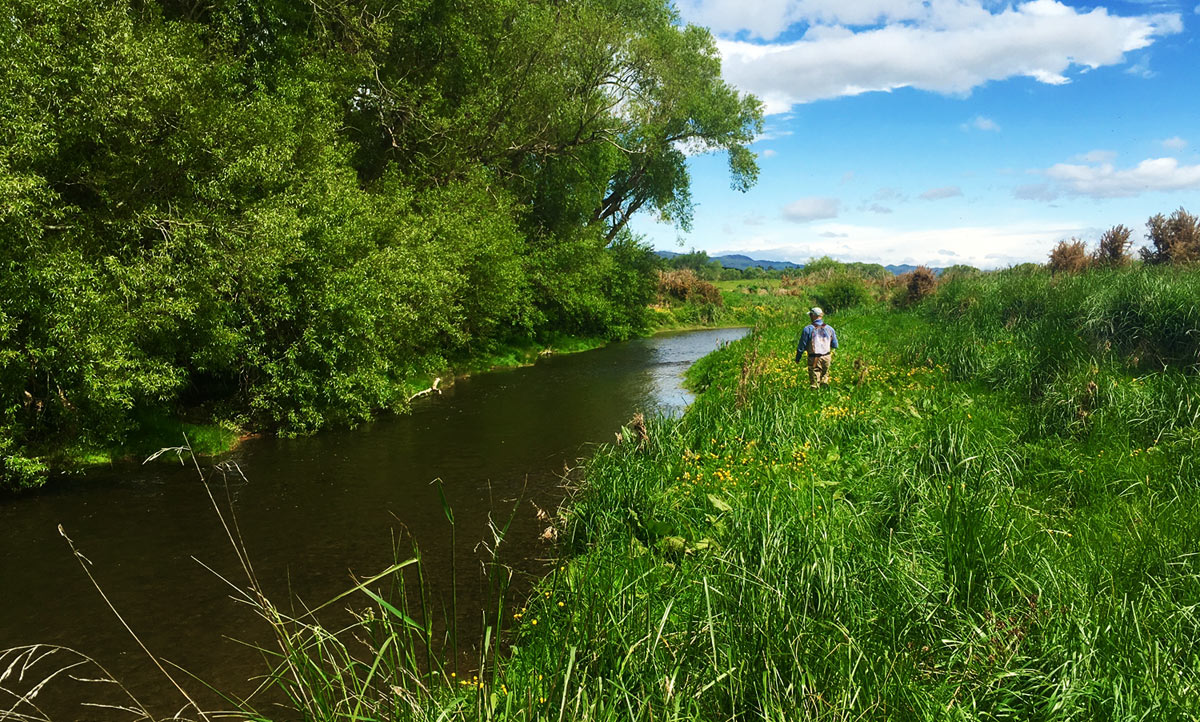
By Chris Dore
Whilst I enjoy chasing big fish in the backcountry here in New Zealand, there isn’t actually much to it: Find a fish. Put your fly in front of him, and strike.
It’s the smaller, hatch-driven streams that offer the challenge for me, the technical presentations their finicky trout require and often ‘outside of the box’ thinking. Straight line presentations rarely succeed and so slack line casts, chosen to beat drag and deliver your fly naturally (or not) are mandatory.
Today, Simon Chu and I visited a rather technical stream in the deep south known for its wary browns. It was a fun day shared with a good mate but we certainly needed to bring our A game. In the end we hooked 2 dozen fish between us on a range of lightweight nymphs and film flies.
HERE ARE A FEW TRICKS WHICH HELPED US TODAY:
– Make every presentation count. Each cast needs to be
Read More »Catch Trophy Brown Trout By Stacking The Odds In Your Favor
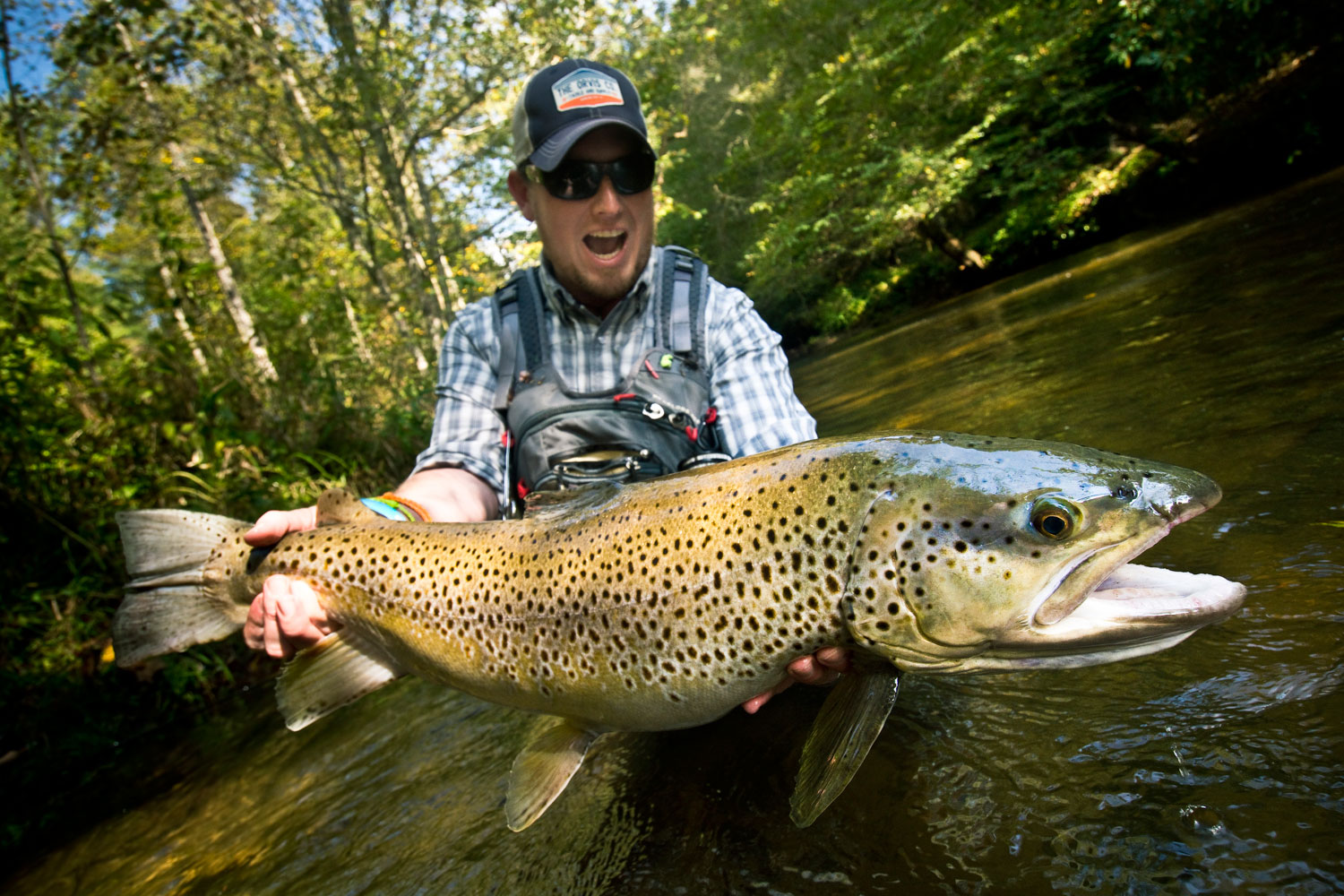
THIS FISH HAS BEEN ALL OVER THE INTERNET. NOW I’M GOING TO TELL YOU EXACTLY HOW TO CATCH ONE LIKE IT FOR YOURSELF.
Once in a while the “perfect storm” really is perfect.
My buddy Dan and I were throwing around some dates for a fishing trip the other day and when those dates started falling in November he said, “As you know, fall will be all about finding big brown trout.”
Brown trout are addictive like almost no other freshwater fish. I can’t tell you how many anglers have told me, “I just want to catch a big brown.” We all want that but if you are serious about turning that want into real-life experience, you’ll need to work for it and you’ll still have to be lucky.
Brown trout are tough customers. Moody, smart and reclusive, they put trout anglers to the test. Especially the big ones. There are two ways to get one. Either you can be lucky and just stumble into it, which is awesome and I highly recommend it, or you can do the leg work and put in the time.
Your best bet is the combination of good timing, the right conditions, the right place and a great presentation. That and persistence will get you what you’re looking for. Here are some guidelines to start with.
LOCATION
You must first be in the presence of big brown trout to catch big brown trout. Finding the right place usually starts with a tip, a fly shop conversation or a photo or article you found on the Internet. Some places are well known for holding big Browns. Reputation alone, however, is not enough to go on.
Once you identify the river where you think you can catch that big boy, you have to start narrowing it down. Brown trout are notorious homebodies, spending most of their lives in one run or even under one rock. There are certain events and times when they will venture out and, to catch them, you either have to know where they are or where they’re going, and when.
I talked to one angler who hunts for big Browns on a local tailwater, and catches them. He has a brilliant, and time consuming, method that works well. He learned from experience that these fish would only eat during high water flows. He goes to the river on low flows with binoculars rather than a rod. He finds big Browns and marks their location on his GPS and returns on high water to catch them.
You can increase your odds by getting after fish in smaller water when they are moving to spawn. Don’t target fish on redds. That’s short sighted and bad for the future populations, but there’s nothing wrong with targeting fish on the move. (Read all about that here.)
My point is, you have to make a plan and do the research.
TIMING AND CONDITIONS
You have to strike when the time is right. By identifying the times and conditions when big brown trout are most likely to be active and aggressive, you raise your odds immensely.
Fall is the peak of brown trout aggression. Browns are fall spawners. The height of their spawning season is around
Read More »